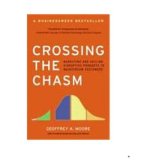Positioning with formulas

In marketing, positioning is the process by which marketers try to create an image or identity in the minds of their target market for its product, brand, or organization.—Wikipedia
Marketing dragged me into a meeting with a new agency. There, I was asked to talk about the people who buy the product, some of its best capabilities, and some of my customer stories. This went on for a bit as I tried to figure out their agenda. Finally it hit me:
“Are you trying to figure out my positioning?”
“Yes,” they said. “Our plan is to interview you and all the members of the leadership team. Then we’ll take what we’ve learned to craft your product positioning.”
Instead, I opened my laptop and shared my already-approved positioning document with the agency team. They were shocked. They rarely, if ever, work with a company that has figured this out already.
Having this conversation moved the project into high gear. They didn’t have to create positioning and didn’t have to suffer the long process of getting it approved. They could start the creative process immediately.
A positioning document explains your product capabilities and message to your internal teams and agencies. It’s the source document for branding, promotion, and sales enablement. It’s sufficiently important that my friends at Pragmatic Marketing recommend putting it in the business case. And if you can get the execs to sign off on positioning, you can reduce your internal approvals dramatically. After all, the words are pre-approved.
Some product leaders are happy starting the positioning process from a blank sheet of paper. They can quickly knock out a simple tagline or elevator pitch (hint: fewer words are better).
For example: The Kindle is a book-reader that’s fun to use, has a long battery life, and doesn’t cost a lot of money.
While some marketers like a simple positioning statement without any particular format, others prefer a little structure. As a rule, it’s easier to edit than to create. If you find it difficult to start, try a positioning “formula.” There are many formulas for a positioning message; just find one you like and start plugging in your product information.
The Regis McKenna format
 Perhaps the most common positioning approach in the tech world is the “Regis McKenna” format, popularized in Geoffrey Moore’s seminal work, Crossing the Chasm.
Perhaps the most common positioning approach in the tech world is the “Regis McKenna” format, popularized in Geoffrey Moore’s seminal work, Crossing the Chasm.
For [target customer]
Who [statement of need or opportunity]
The [product name] is a [product category]
That [statement of key benefit, a compelling reason to buy]
Unlike [primary competitive alternative or approach]
Our product [statement of primary differentiation]
Example: For travelers who read a lot, the Kindle is an electronic book-reader that puts thousands of books at your fingertips. Unlike Apple’s iPad, you can use our reader for weeks on a single charge.
The “simile” approach
Perhaps the quickest way to a message is the simile. Explain your product in a familiar context. This format provides a nice shorthand for sales people too.
It’s like [reference product in another category]
but for [new application].
Example: The Amazon Kindle Paperwhite: it’s like an iPod but for books.
An agile user story format
I’ve started recommending positioning with the user story format for agile teams. They’re already familiar with the format, so we can just write positioning like any other user story, but at a product level.
As a [persona]
I want to [solve a problem]
So that [professional benefit statement].
Plus [personal benefit statement]
Example: As a voracious reader, I want to have my entire library with me wherever I go so that I can read whatever I want whenever I want. With the Kindle, I can! Plus, I like to appear “in the know” about both gadgets and books to my friends and colleagues.
About the competition
When your product has a lot of competition, you’ll also need to playbook for why you’re better than a competitive alternative. That’s the reason the McKenna model has the phrase starting with “unlike.” And you don’t just want to position against the competition, you want to re-position them. It’s not “We are good; they are bad.” It’s “We are good at this; they are good at something else.”
Upgrade positioning
In addition to a positioning document for each product or solution, you’ll also want one for new versions of old products, answering the question: “Why should I upgrade?”
We’ve all seen cases where a new upgrade failed to catch on with the customer base. (Think of the last few releases of Microsoft Windows®) Approach the positioning process again but from the standpoint of a customer who has an earlier version. What do you need to say about your product to compel your customers to suffer the move to a new release? The most common reasons—“we want your money” and “your upgrade will reduce our support costs”—aren’t reasons that the customer cares about.
People upgrade for different reasons but you’ll usually find they want a specific new capability. Interview some customers who have upgraded (or plan to upgrade) and what you learn will be the core of your message.
Example: The new Kindle Paperwhite. The world's most advanced e-reader just got better: higher resolution, higher contrast touchscreen with built-in light, and 8-week battery life. All at a lower cost. Now you can read anywhere.
If there’s one template or tool that summarizes everything you want to communicate about a product, it’s positioning. It saves you a ton of work because you now know exactly what you want to say. You’ll have this at the ready when you write a media release, a sales presentation, a demo script, an ebook. And good positioning also provides helpful context for your development team.
Figure out what you want to say before you have to say it. Do your positioning as soon as you can. [Tweet this]

